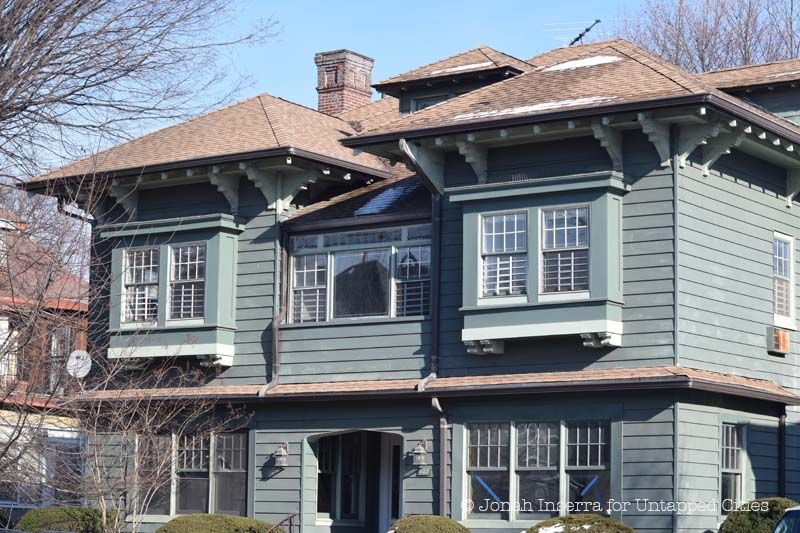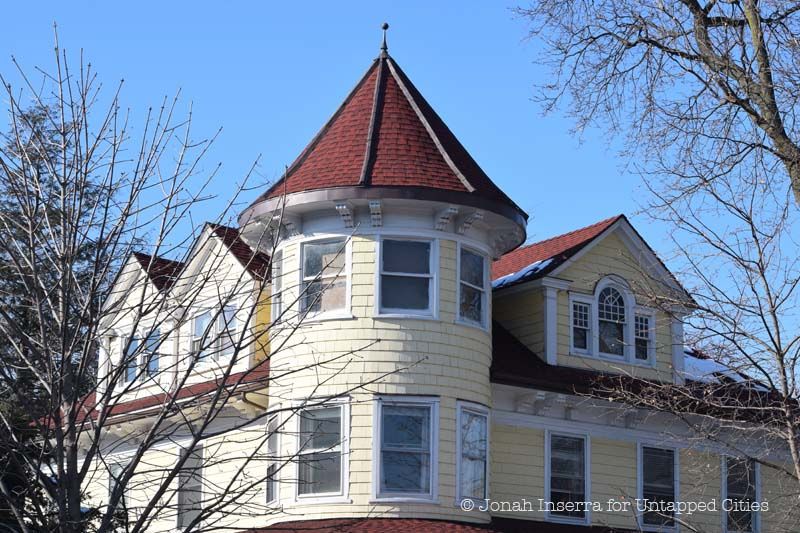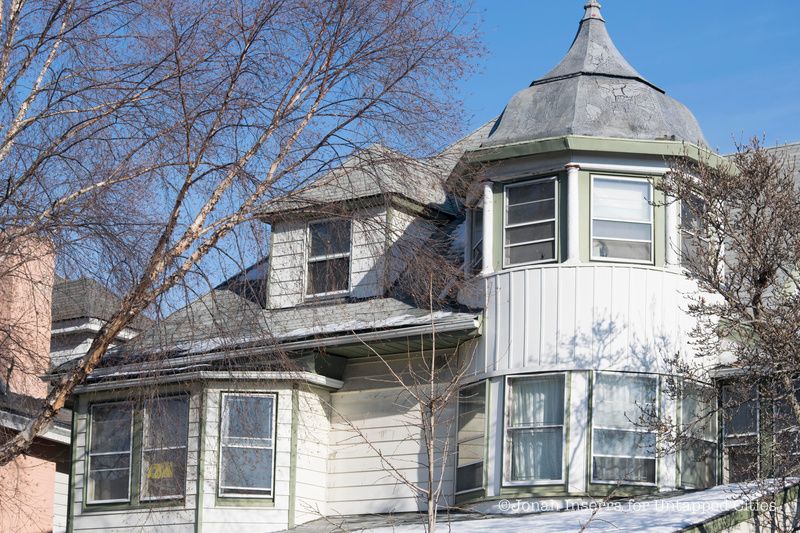6 NYC Sites Connected to the Titanic Disaster of 1912
Uncover memorials and historic buildings in New York City tied to the tragic sinking of the Titanic.


When it comes to architectural calling cards, Brooklyn is usually pigeonholed into the stately brownstone or the ruddy, vinyl-sided rowhouse. But hop the Q train south to Flatbush-Ditmas Park and you’d be forgiven for wondering if you missed your stop by a few a hundred miles or so. That’s because the central Brooklyn neighborhood is home to one of the largest concentrations of Victorian-era homes in the country, whose pinched gables, asymmetrical facades, and wraparound porches are more associated with the Midwestern mansions of Gilded Age industrialists than middle class neighborhoods in the Outer Boroughs.
The area known as Victorian Flatbush actually encompasses a clutch of eleven neighborhoods off the southern edge of Prospect Park including Ditmas Park, Fiske Terrace and Midwood Park. “They comprise approximately 2,000 to 2,500 Victorian, Queen Anne, Tudor, Greek Revival, Colonial Revival, Japanese Cottage, etc. style homes,” said Brooklyn borough historian Ron Schweiger to Brick Underground. “Probably, [it’s] the largest collection of this type of architecture anywhere in the United States, in one area.”

Squared oriel windows in Victorian Flatbush.
The provenance of the 80 to 100 year-old detached homes that give the neighborhood its character lies in the Brooklyn Rapid Transit line which connected Manhattan to Coney Island when it was completed at the turn of the century, according to the New York Times. Not long after, developers began converting erstwhile farmland “into meticulously planned residential neighborhoods, and advertising them as a sophisticated alternative to ‘cliff dwelling’ in a Manhattan apartment building,” the Times reports. It should be noted that Manhattan is hardly bereft of turrets, mansard roofs and whimsical weather vanes. Especially Uptown, holdovers from a more ostentatious era of architecture remain and continue to inspire in various ways. Take for instance the Tenenbaum House, the charismatic backdrop of Wes Anderson’s much-beloved, early aughts opus.
It’s a similar story to another outer borough neighborhood gaining notoriety in recent years. Though Jackson Heights, Queens, has been the subject of glowing articles and an award winning documentary exploring the contours of the neighborhood’s vibrant and diverse immigrant communities, it was originally dreamed up as a suburban-style retreat for upper-middle class, white Manhattanites looking to raise a family outside of but within commuting distance of the city. Thus the Queensboro Company set about busily promoting and meticulously planning the newly-dubbed Jackson Heights.
With the completion of the IRT Flushing Line in 1917, residents streamed into heavily-advertised “garden apartments,” full square blocks of decorative brickwork and Dutch gables enveloping interior courtyards of landscaped gardens intended for common use. This inverted layout was greatly influenced by the contemporary “garden city” movement being championed in the U.K by English urban theorist Ebenezer Howard. Howard’s utopian vision, which consisted of self-contained communities girdled by green space, was a direct response to the squalor and perceived social decay of 19th century cities. Fortunately, the pessimism of thinkers like Howard has proven ill-founded, and both of these Anglo-inspired communities now play home to a host of residents much more diverse and considerably less circumspect at the prospect of urban living.

One of many spired turrets in Ditmas Park
Just as Victorian Flatbush refers to a collection of neighborhoods, Victorian-era homes derive from a number of distinct architectural styles popular in the late 19th and early 20th centuries. In the Victorian swathe of Ditmas Park though, it’s this very eclecticism amid an urban landscape that feels overrun by copy-and-pasted developments that gives the area its charm. Walking down the tree-lined greenways, a bevy of features and architectural flourishes including corner turrets, slate rooves, and oriel windows riff on the Victorian template. The result can range from banal to endearing to downright eldritch; think the Bates Mansion or Amityville Horror. It’s no surprise that the Ditmas Park and the surrounding neighborhoods have a reputation for some of the city’s best Halloween parades.


Given the trend of gentrification and development in Brooklyn of late, some residents are wringing their hands over the future of this unique slice of the city. To date, only Prospect Park South, Albemarle-Kenmore Terraces, and Ditmas Park-proper enjoy the protection of Historic District status. Even so, homeowners in the area were proud enough of their picturesque abodes and suburban-style digs to let Gothamist in for a look around. Here’s to hoping that these centenarian estates can hold on for another century or more.
Next, check out the Japanese House in Flatbush, NYC’s Newly-Landmarked IRT Powerhouse on West 59th Street and explore 13 Lost Mansions of Long Island’s Gold Coast. Get in touch with the author @jonahinserra.
Subscribe to our newsletter